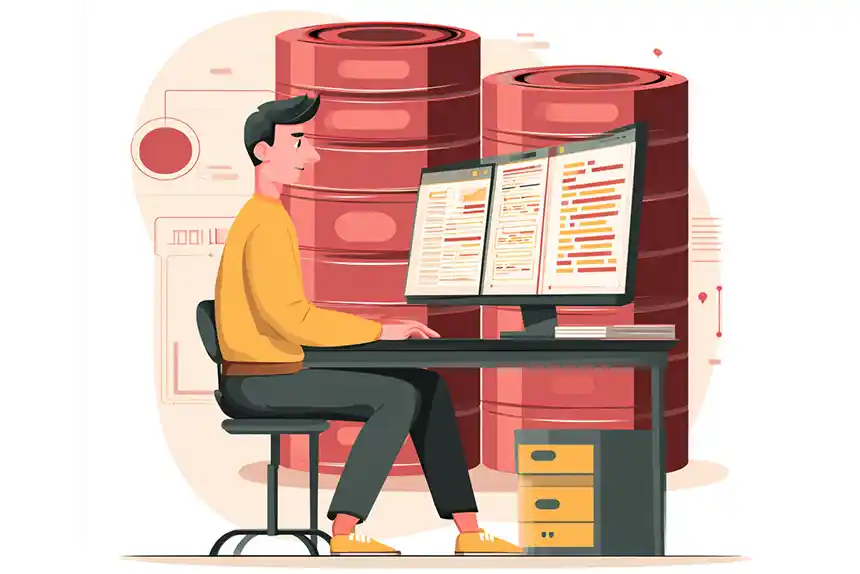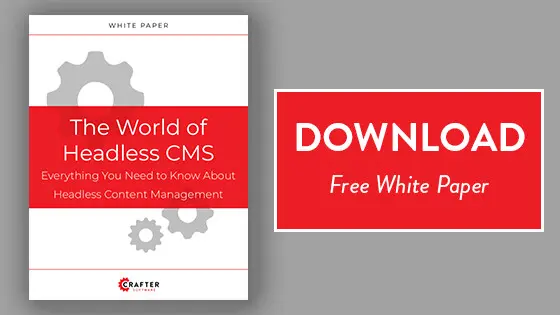What Are Content APIs?

Amanda Jones

The way that content gets handled continues to evolve as the technology around us advances and new digital channels and devices emerge.
While traditional CMSs once allowed us to create and manage content for websites, they lack the infrastructure necessary to handle the increased channels and touchpoints available today.
Now, we live in a headless CMS environment. These content systems remove the frontend component and rely on a backend that acts as a content repository.
But, organizations still need to be able to connect to various channels and distribute content to the websites, mobile, and multitude of IoT and other devices that customers use today.
A headless CMS makes all of that possible with the help of content APIs.
What is an API?
API, or application programming interface, is a critically useful tool in the software development world. An API lets one application make requests from or invoke actions in another. It’s a way for software programs to talk with each other.
APIs are tremendously valuable for businesses since they can provide data that make software applications more scalable, flexible, and allow them to integrate with other applications.
When it comes to using APIs for the web, there are a couple of options, but the most common is a REST API.
REST APIs
Representational State Transfer, more commonly known as REST, is a web services API. REST is common in web applications of various sizes with major corporations like Amazon, Google and Netflix using them for a variety of reasons.
Language- and/or Framework-specific APIs
Using REST APIs is usually easy but native bindings for certain languages (e.g., Java, Groovy, Javascript, .Net, etc.) and development frameworks (e.g., Angular, React, Vue, etc.) further reduce programming time and complexity by simplifying and reducing the code required to get the job done.These bindings make the programming model not just simple but native to the language or framework.
GraphQL
REST is the standard for web APIs due to its stateless servers and structured access to resources. But REST can sometimes be inflexible. It can be hard for applications to retrieve specific data points. Eventually, this can lead to over fetching, when endpoints return more data than what the application requires.
As a result, many are moving to GraphQL instead. GraphQL can help provide more flexibility and efficiency as a web service API and solves many of REST’s shortcomings.
That covers the basics of what an API is, but how does it all relate to content?
What are Content APIs?
APIs usually transfer data between applications.
They help provide structure to information so that not only can computers understand it, but so that we can get value from that information.
So APIs are typically used to transfer data, but not actual content.
Transferring content between applications requires that APIs transfer data as well as an understanding of what that data means, including its associated metadata and relationships.
Metadata and relationships are a way of enriching content and giving it meaning. As a result, content APIs can not only transfer data and organize it but provide meaning and context as well.
Content APIs offer tremendous value when used correctly. They allow the delivery of content to various channels and are critical to what is possible, primarily when used in conjunction with a headless CMS.
How to Use Content APIs
Consuming content across multiple devices is commonplace in today’s society. Around 75% of adults begin an activity on one device and then finish it on another. This indicates that people want to consume valuable content in multiple places, and content APIs can make that possible.
To use content APIs to their fullest potential requires the aid of a headless CMS. A headless CMS offers a backend content repository and makes this content accessible to multiple frontends using APIs.
Without a specific front end to connect to, the CMS is essentially headless. This actually adds to the flexibility and appeal of the CMS. Content gets pulled from the repository and then displayed on a website, mobile device or any other digital channel where viewers can consume it.
But a robust headless CMS doesn’t only offer content APIs. Yes, pulling content from a repository is half of the battle but other CMS capabilities are still necessary for a great overall customer experience, which is the goal of using a headless CMS.
These CMSs must also aid in creating content as well as managing it and delivering it.
Content authoring APIs can turn a headless CMS into a content juggernaut, delivering value in several different ways. They allow for the creation of consistent customer experiences and for brands to create/update/modify and deliver omnichannel content.
Commerce
Customers want their e-commerce experiences to be more than just convenient. They want them to be across channels as well.
With content APIs, this becomes possible since customers can interact with brands and make purchases with any device they choose. With the right CMS, their interactions in-store, on mobile, on a tablet or anywhere else also remain connected.
Personalization
Personalization is a growing part of the customer experience, and it can lead to higher conversions and increased engagement.
With content APIs and a solid strategy, brands can align themselves with the needs of their customers and appeal to them with personalized content.
The importance of a headless CMS in the successful use of content APIs cannot be understated. Modern digital experiences demand that they combine flawlessly. Every headless CMS, by default, relies on APIs, but not all of them have the required architecture to scale and maintain performance.
Your choice of CMS matters if you want to get the most out of APIs.
Getting the Most out of Content APIs with CrafterCMS
CrafterCMS uses an API-first approach that is built for delivering dynamic content experiences. It natively provides REST, GraphQL, Javascript, Groovy, Java, and Freemarker content APIs.
For example, Crafter’s native GraphQL server support allows you to manage schema and quickly build web applications. CrafterCMS invested heavily into GraphQL due to how well it aligns with our approach to web development. GraphQL’s massive community and speed of adoption can provide several use cases and bring content management to the forefront of developer communities due to its open source standard.
Also, our Javascript APIs support both client-side (browser-based) and server-side (e.g., Node.js) rendering, and support a full range of open source Javascript libraries and frameworks of your choice.
As an open source CMS, Crafter gives you several options for deployment on-prem or in the cloud. Our vibrant developer community is available to offer support and solutions to whatever challenges you come across while managing your content. Plus, as an open source platform, you can avoid the vendor lock-in issues and SaaS trap dilemma that plagues several organizations.
Want to learn more about how CrafterCMS developers benefit from a wide range of content APIs? Read our White Paper on The World of Headless CMS: Everything You Need to Know About Headless Content Management.
Related Posts

How Should You Structure a Blog Post So AI Models Actually Cite It?

Amanda Jones

Publishing Content from Crafter Studio to External Systems and Databases

Sara Williams

Websites Are Dead?

Mike Vertal

No-Code Experience Building for Marketers & Designers

Amanda Lee











